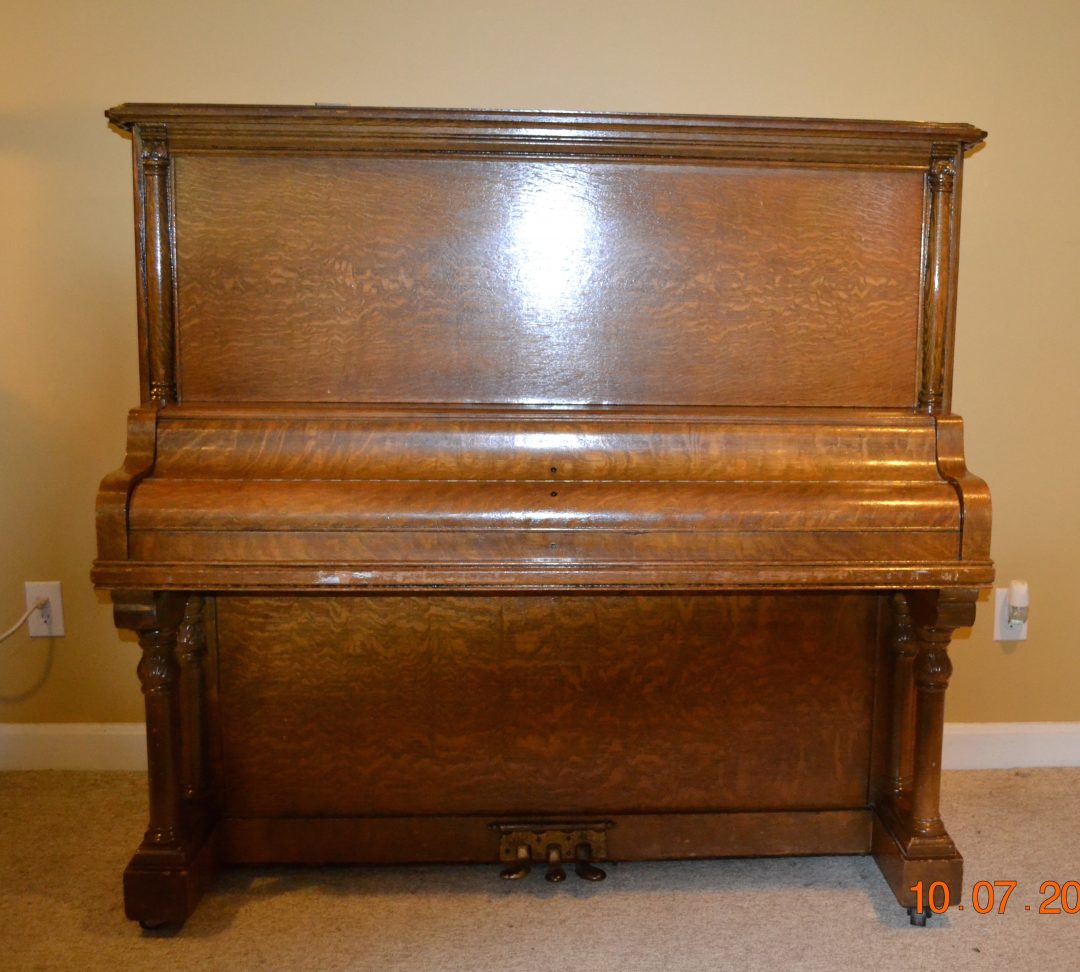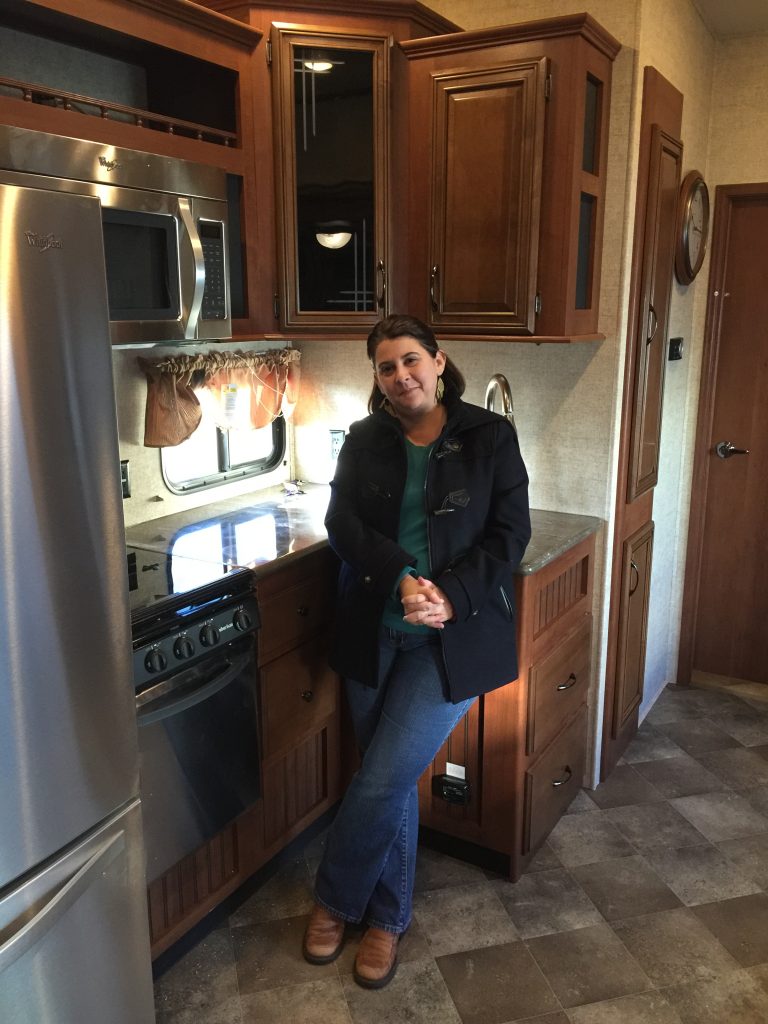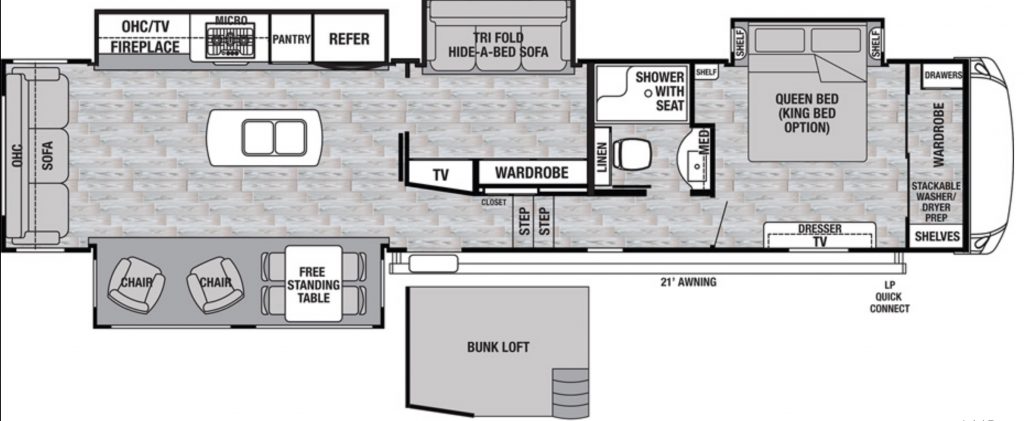
Today we are going to use the room inventory you created last week! Our goal right now is to assign homes to our Big Pieces. Just as a reminder, the Big Pieces are items, usually furniture, that cannot be packed in a standard-size moving box.
You will need your notebook with your room inventory and a pencil.
Once you are ready to begin, sit a moment and think of where all this downsizing is leading you. What is at the end of all the packing? What will your space look like?

If you are moving into an RV, you won’t need Big Pieces, unless you are planning to store them for later. If you are moving overseas, you might be storing just the pieces you cannot replace, such as sentimental items. If you are helping a parent move, what will their new space look like? A spacious but smaller condo? A room in a sibling’s home?
If you have a floor plan of your new space, try to locate it to store in your notebook. If you have a storage space lined up, think about the measurements of that space. If you don’t know how much storage you will need, take 5-10 minutes now to just look up the closest storage facility and see what their standard rates look like. Chances are when you see the monthly fee associated with the storage space, you will want to keep your items to a minimum.

OK. Now that you have a picture in your mind about the amount of realistic space you have to work with, you are ready to begin assigning.
Find a comfy space, take a deep breath and pick up your pencil.
Turn to the first page in your room inventory. Look at the list of Big Pieces. Are there any that stand out to you as MUST KEEP? If the item is going to move with you to your new space, write Keep. If the item is extremely precious and you are willing to pay every month to keep it in storage, write Storage. If the item is an ordinary sofa that you like but it just won’t fit in your new place, write Sell. If your sofa is from your college days, maybe Donate would be more appropriate.

Write down your first inclination. Nothing is in stone yet! Just move quickly, marking items you think you can assign. Try not to spend more than 5 minutes per room page. If you get stuck on one, move right on to the next item.
When you are all done, you have probably been working for a solid hour. That is a lot of decisions to make! Take a break. Stretch, get a drink and go outside for a few minutes if the weather allows. Give your mind a chance to just be. Breathe.

If you are ready to move on, then go back through the items you didn’t mark. Put your best guess. Sometimes that will look like a two-part option. Give the item back to the person who gave it to you OR sell if they no longer want the item. The two items that I pictured, the piano and the loveseat, both came from my family. I checked with them to see if they wanted the items back before proceeding to eventually sell the items. Go category by category and see how many items you are keeping. How many are going to storage? How many are for sale or donation? Do you feel like you are on the right track so far?
If you are tired or out of time, schedule a thirty-minute meeting another day with the rest of the decision team. It can be in person, after dinner, over Facetime, Skype. Whatever you need to do.
Make sure the people on your decision team are given the same chance you were. Briefly discuss your end point or storage situation as a reminder. Then open the inventory and ask your team for their ideas on each item. Set a timer for 5 minutes if you find you are getting derailed by distractions or talking. Let your partners know you have filled in your thoughts but you would like to know their thoughts. This is why we are doing all of this in pencil.
If your team is highly distracted, make index cards that say Keep, Storage, Sell or Donate. One word per card. Leave the cards on the table so they can point. This can help keep minds on task. A timer can also help speed the decisions along.
If your team is emotional or can’t seem to make a decision, agree to follow up another day at a specific time. Offer to copy pages for them or take pictures with your phone and text to your team. This will give them lots of time to think through the Big Pieces.
No matter how many items are completed at your first meeting, say positive things. “Thank you for all your help!” “This has made my job easier and I appreciate your input.” Decisions are hard to make for some people and progress is just that – progress.
If you have time after running through the inventory with the team, see where your thoughts align. If both of you want to Sell an item, go ahead and confirm that in pen. If you have different ideas, just name those items and agree to meet back up – the next night, over the weekend – and make those final decisions. Keep the discussion light. Nothing will be put on the curb before the list is finalized. We have another task to move on to after this one.
Before you move on to the next step, have you filled in all of the Big Pieces on your inventory? Are you and your team in agreement about proceeding?
If yes, congratulations!! Making these decisions up front will allow you to move forward with less decision fatigue. You will be ready to hug yourself next week.
If you aren’t quite there, try to be patient. Consider your timeline. If you have the extra time, then extend the completion for a week. Grieving can play a big part in shutting down the ability to make decisions. Grief about leaving a home you love, grief about moving on, grief about letting precious things go. Give yourself whatever time you can and be kind to yourself and your team through this process.

When you are ready to move forward, keep reading….
Now we are on to the last two tasks for the Big Pieces. The first one is to think about how to sell the items marked Sell on your inventory. Will there be one large yard sale? Will you sell the items online in a Facebook group or to friends? If you have time, I would recommend selling your items in the most public way you can. You often make more money that way. As soon as the item is listed, the public has to make their move and purchase or risk losing the item. Plus, you can get backup offers – people who mark “next” can be contacted if the original sale falls through. This is preferable to a yard sale scenario where people are trying to talk you out of your items for free. You have no idea what someone will pay and if you could have sold it for more.
If you are having a yard sale, you need a price for your item. It is a good idea to find similar items for sale on a yard sale site and see what the item sold for previously. If you are selling them online, you will need a description (brand, age, condition) as well as a good photo. If the piece is an antique you will want additional photos showing joinery (where the wood is joined together) and maker marks (usually the maker’s name on the back of the piece). This is important to people who purchase more expensive or older pieces. This might take you a while to compile pricing, descriptions and photos. Make sure you confirm pricing with your team and write your sale price right on your room inventory sheet so they do not get lost. You will need these later.
If possible, we will wait to unload and move these Big Pieces. Right now they are full of Small Pieces or you are sleeping on them. Once the destination of each item has been decided and pictures have been taken, if needed, we are going to move on to the next – and larger – task, Small Pieces.
Here is the final step for this week. Ready?
We are going to take the room inventory and we are going to add the names of the Small Pieces. This will not take much longer than it did to write the Big Pieces, so budget an hour of time.
Head to the first room in your inventory. Ignore all the big pieces. Open the cabinet doors, look in the ottoman, check the closet and the drawers. There is no need to organize items by category or to pull everything out of the drawers, just peek in the drawer and close it.
All you want to write down is the categories of items in that room. Say you are back in the Living Room. Your category items might be: games, books, DVDs, videogames, videogame equipment, photo albums, throw pillows, sofa blankets, candles, fireplace tools/screen, lamps. Write each category on it’s own line, right under the Big Pieces.
This does not need to be detailed. You don’t need to copy down the names of the games you have or how many DVDs. Just the categories.
Move to the next room. If it is a bedroom, you might have: clothing, shoes, sentimental items, bed linens, framed art, mirror, lamps.
When all the categories of Small Pieces are listed for each room, you are done.
So to recap the week, you:
- decided on a future home for your Big Pieces with your decision team
- decided how to sell your sale items and took pictures/priced as needed
- add your Small Pieces to your room inventory sheets
Well done on another successful week! Rest up. You deserve a rest after all the work you have done and you will need mental and physical strength next week as we start the Small Pieces. Find a way to take care of yourself. Make a coffee date with a friend to get out of the house. Take a long bath. Have a nice long walk or go to a yoga class. Get some extra sleep.

[…] you missed part two of our downsizing project, click here. If you want to start at the beginning, all the way back to part one, then start […]